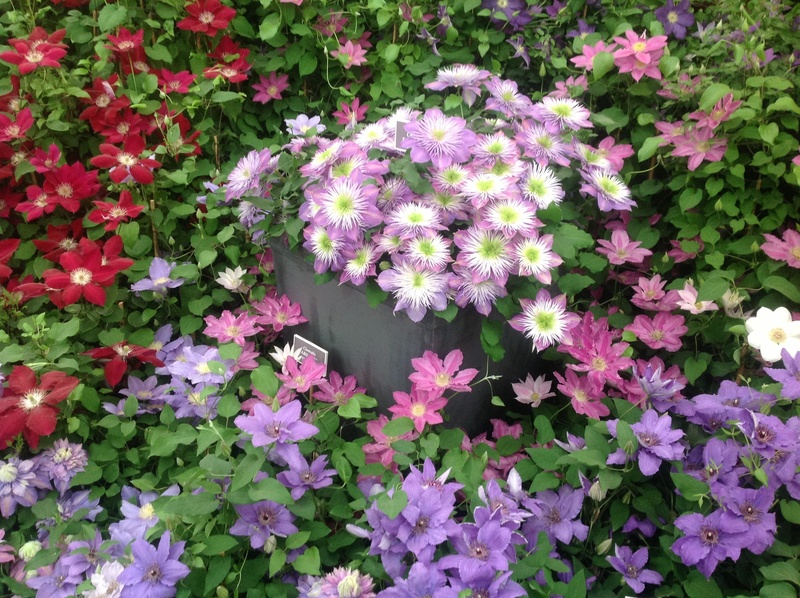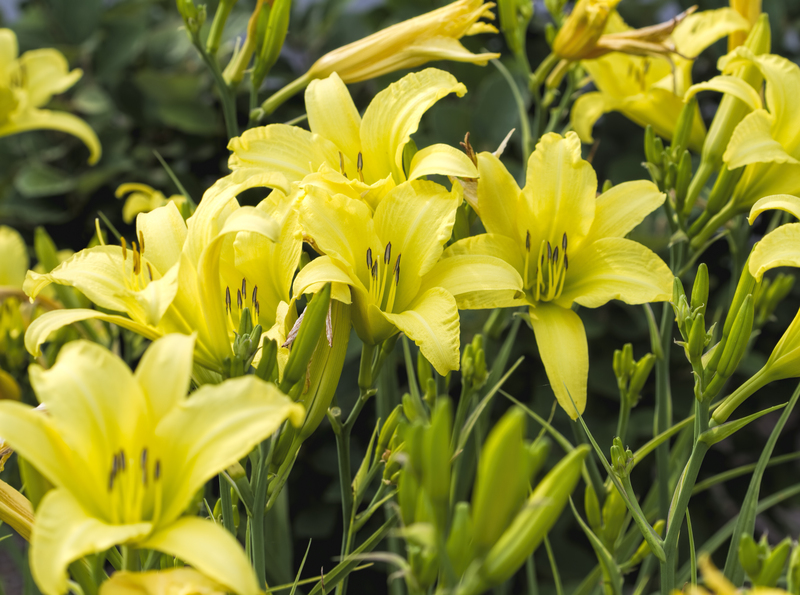Embarking on a Journey to a Flourishing Herb Garden
Posted on 31/05/2025
Embarking on a Journey to a Flourishing Herb Garden
Are you dreaming of harvesting fresh basil for pasta, snipping fragrant rosemary for your roast, or simply enjoying the beauty and aroma of thriving herbs in your own garden? Starting a flourishing herb garden is one of the most rewarding pursuits for both seasoned horticulturists and enthusiastic beginners alike. This comprehensive guide will walk you through every step, ensuring your herb patch blossoms into a verdant, abundant haven.
Why Grow Your Own Herb Garden?
Building an herb garden does more than just provide you with convenient, fresh ingredients for your kitchen. Embarking on a journey to cultivate herbs offers a myriad of benefits, including:
- Health rewards: Many herbs boast medicinal properties, supporting wellbeing and boosting immune health.
- Flavor at your fingertips: You're always seconds away from vibrant culinary enhancements.
- Aesthetics and fragrance: A flourishing herb patch fills your garden or home with refreshing scents and lush greenery.
- Cost savings: Reduce grocery bills by picking what you need right outside your door.
- Environmental impact: Home-grown herbs are a sustainable alternative, requiring minimal packaging and transport.
- Pollinator invitation: Herbs attract bees and butterflies, bolstering biodiversity in your space.

Planning Your Flourishing Herb Garden
Choosing the Perfect Location
The secret to a thriving herb garden starts with location. Most common herbs require at least 6 hours of sunlight daily and well-drained soil. Whether you're carving out a backyard plot, setting up raised beds, or utilizing containers on a sunny balcony, consider these tips:
- South-facing spots often capture the most sunlight in temperate climates.
- Patios and windowsills make excellent herb-growing sites for urban dwellers.
- Ensure easy water access and protection from harsh winds.
Selecting Your Herbs: What to Grow?
The beauty of starting a flourishing herb garden lies in versatility. Choose herbs that suit your culinary desires, climate, and available space. Here are popular choices you can try:
- Basil - Ideal for Mediterranean dishes and summer salads.
- Rosemary - A perennial favorite for savory recipes and aromatics.
- Thyme - Essential for French cuisine and robust stews.
- Mint - Perfect for teas, desserts, and cocktails. Plant in containers to prevent spreading.
- Parsley - Universally useful, from garnishes to soups.
- Cilantro (Coriander) - Crucial for Latin, Indian, and Southeast Asian recipes.
- Sage, Dill, Oregano, and Chives - Other excellent, easy-to-grow staples.
Pro Tip: Start with a handful of favorites. It's more manageable to care for a small patch and expand as your confidence grows.
Soil and Preparation: Laying the Foundation
A flourishing herb garden begins with healthy soil. Most culinary herbs thrive in:
- Well-drained soil with a pH between 6.0 and 7.5.
- Enriched organic matter, such as compost or well-rotted manure.
- Loose texture to promote root development and prevent waterlogging.
Before planting:
- Remove debris, stones, and old roots from your chosen site.
- Loosen soil to a depth of at least 8-10 inches.
- Mix in compost for nutrients.
- If using pots, select containers with drainage holes and fill with high-quality potting mix blended with sand or perlite.
Planting: Seeds or Starts?
When embarking on your herb garden journey, decide if you'll start from seeds or purchase young plants (starts):
- Seeds are budget-friendly, offer diverse varieties, and are ideal for annual herbs like basil, dill, and cilantro.
- Seedlings or nursery starts jumpstart your herb patch and are recommended for slow-growing perennials such as rosemary, thyme, and sage.
Planting tips:
- Read packets or labels for spacing and depth instructions.
- Water thoroughly after planting but avoid soaking the soil.
- Thin seedlings if needed, ensuring each plant has ample room to grow.
Watering and Care for a Thriving Herb Patch
Ensuring your herb garden flourishes is about balance. Herbs dislike soggy roots but suffer if allowed to wilt. Keep these key points in mind:
- Water early in the morning for best absorption.
- Allow soil surface to dry between waterings, but never to the point of drought stress.
- Container herbs may require more frequent watering, especially in summer.
- Add mulch around outdoor herbs to retain moisture and suppress weeds.
Feeding and Fertilization
While herbs require less feeding than vegetables, occasional nibbles of nutrition help maintain a flourishing herb garden:
- Use a slow-release organic fertilizer or liquid seaweed every 4-6 weeks during growing season.
- Avoid excess nitrogen, which encourages leafy growth at the expense of flavor and aroma.
Companion Planting: Growing Herbs Together
Companion planting maximizes your herb garden's potential. Some herbs benefit from growing together or near specific plants:
- Basil enhances growth of tomatoes when planted nearby.
- Chives deter aphids and benefit carrots and roses.
- Rosemary and sage thrive together in dry, sunny spots.
- Peppermint repels pests but should be contained due to its vigorous nature.
- Avoid coupling dill with carrots, as they compete for resources.
Experiment with combinations and observe your unique microclimate for best results.
Dealing with Common Challenges
Pests and Diseases
Most herbs are naturally pest-resistant, but every herb gardening journey faces challenges:
- Monitor for aphids, spider mites, and whiteflies. Remove gently with water jets or neem oil sprays.
- Good air circulation and avoiding overhead watering prevent most fungal diseases.
- Harvest leaves frequently to reduce risk of mildew and overcrowding.
Climate and Seasonal Adjustments
- Protect tender herbs from frost by moving pots indoors or covering with cloches.
- In hot climates, afternoon shade helps prevent wilting and bolting.
- Choose hardy perennial herbs or bring potted plants inside during cold months.
Encouraging Vigorous Growth
For a truly lush and productive patch:
- Pinch off flower buds to keep herbs like basil and mint producing fresh leaves.
- Harvest regularly and never remove more than one-third of the plant at any time.
- Rotate container positions to ensure even sunlight.
Bountiful Harvest: How to Pick and Store Your Herbs
The reward for nurturing a flourishing herb garden is a constant supply of fragrant, nutrient-rich leaves. Harvesting at the right time preserves maximum flavor and encourages continued growth.
- Morning harvests are best, when essential oils are most concentrated.
- Use sharp scissors or snips to avoid damaging the plant.
- For herbs like thyme and oregano, cut sprigs just above a pair of healthy leaves.
- Woody herbs (rosemary, sage) benefit from periodic trimming to promote bushier growth.
- Try not to harvest at flowering; leaves can become bitter or lose their vibrant aroma.
Preserving and Storing Herbs
To savor your home-grown flavors all year:
- Drying: Hang small bunches upside down in a dark, airy place. Once dry, store in airtight jars away from sunlight.
- Freezing: Chop and portion herbs into ice cube trays with water or olive oil for ready-to-use flavor boosts.
- Herb butters, pestos, oils and vinegars offer creative, delicious preservation methods.
Herb Garden Inspiration: Layout and Design Ideas
Unleash your creativity by designing a flourishing herb garden that suits your taste and space:
- Container gardens: Perfect for patios, balconies, or even kitchen windowsills. Mix sizes and shapes for visual interest.
- Herb spirals: A beautiful raised mound design that maximizes space, offers varied microclimates and is a pollinator haven.
- Formal beds: Arrange herbs in geometric patterns or knot gardens for a classic, elegant effect.
- Border plantings: Edge vegetable or flower beds with compact, fragrant herbs like thyme or oregano.
Don't be afraid to experiment - herbs are forgiving and adapt well to many arrangements!
Children and Herb Gardening: Growing Together
If you have kids at home, introducing them to herb gardening is a fantastic way to teach science, patience, and respect for nature. Children delight in watching seeds sprout and enjoy harvesting their "own" basil or mint for pizza night or lemonade.
- Let children choose a special container or mini-garden section.
- Start with quick growers like cress or basil for instant gratification.
- Encourage sensory exploration - feeling, smelling, and even tasting safe herbs.
Gardening together creates lifelong memories and healthy food habits.
Herb Gardening Year-Round: Indoor Tips
You don't need a sprawling yard to enjoy a flourishing indoor herb haven. Windowsills, vertical gardens, and countertop planters make year-round herbs possible!
- Choose compact varieties suitable for pots (parsley, basil, mint, chives).
- Aim for south or west-facing windows or invest in a simple LED grow light.
- Water sparingly and use a general-purpose indoor potting mix for best results.
- Avoid crowding and rotate containers for even light exposure.

From Seed to Table: Savoring Your Success
Few experiences compare to the satisfaction of seasoning a meal with herbs you've grown yourself. Whether you're sprinkling chopped chives over eggs or brewing a restorative cup of herbal tea, your journey to a flourishing herb garden transforms daily routines into nurturing, sensory experiences.
Simple Uses for Abundant Herbs
- Basil, tomato & mozzarella salad: Classic Caprese with home-grown basil brightens any lunch.
- Rosemary roasted potatoes: Earthy rosemary elevates a humble side dish.
- Mint lemonade or herbal tea: Fresh mint refreshes drinks and desserts.
- Herbed butter or oil: Blend chopped herbs into butter or olive oil for instant flavor bombs.
- Infused vinegar: Add thyme, tarragon, or basil for homemade gourmet gifts.
Conclusion: Begin Your Flourishing Herb Garden Adventure Today
Embarking on a journey to a flourishing herb garden is an exciting, accessible adventure brimming with possibility. Whether you start small with a few pots on a windowsill or cultivate an expansive backyard plot, every sprout brings you closer to fresh flavors, beautiful aromas, and a deeper connection with nature.
Ready to start your own vibrant, thriving herb paradise? With a little planning, care, and creativity, your herb garden will flourish--providing beauty and bounty for years to come!

